Introduction #
The authors present their collected and annotated ArSL21L: Arabic Sign Language Letter Dataset consisting of 14202 images of 32 letter signs with various backgrounds collected from 50 people. They benchmarked the ArSL21L dataset on state-of-the-art object detection models, i.e., 4 versions of YOLOv5.
Motivation
For individuals with hearing loss (PwHL), establishing social connections with the mainstream population can be challenging. This often necessitates interactive computer systems capable of understanding sign language. With the growing popularity of Metaverse applications employing augmented reality (AR) and virtual reality (VR), there’s an opportunity to facilitate remote sign language instruction through avatars that mimic gestures, powered by AI (Artificial Intelligence) systems. While numerous methods and datasets exist for English sign language, resources for Arabic sign language are limited. Thus, the authors introduce the Arabic Sign Language Letters Dataset (ArSL21L), comprising 14,202 images depicting 32 letter signs against various backgrounds. These images were collected from 50 individuals and annotated for clarity and consistency.
Arabic sign language.
Summary #
ArSL21L: Arabic Sign Language Letter Dataset is a dataset for an object detection task. It is used in the educational domain.
The dataset consists of 14202 images with 14208 labeled objects belonging to 32 different classes including thaa, al, dha, and other: fa, ghain, ha, khaa, la, meem, saad, seen, sheen, ta, thal, toot, yaa, haa, ain, jeem, ya, aleff, bb, kaaf, gaaf, taa, laam, zay, dhad, ra, nun, waw, and dal.
Images in the ArSL21L dataset have bounding box annotations. All images are labeled (i.e. with annotations). There are 2 splits in the dataset: train (9955 images) and val (4247 images). The dataset was released in 2022 by the United Arab Emirates University.

Explore #
ArSL21L dataset has 14202 images. Click on one of the examples below or open "Explore" tool anytime you need to view dataset images with annotations. This tool has extended visualization capabilities like zoom, translation, objects table, custom filters and more. Hover the mouse over the images to hide or show annotations.















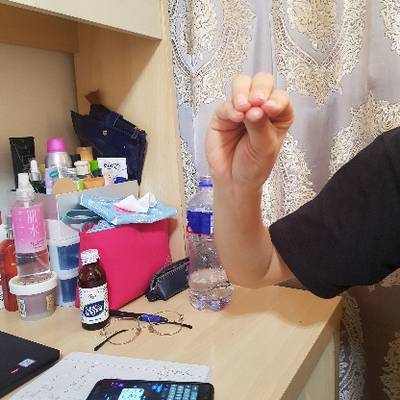















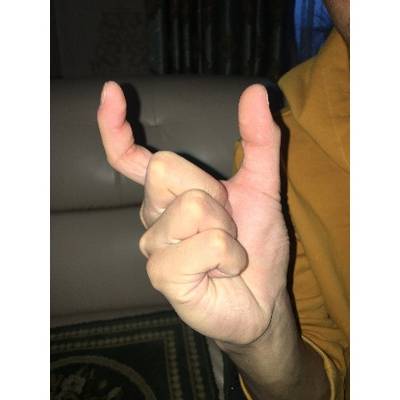



















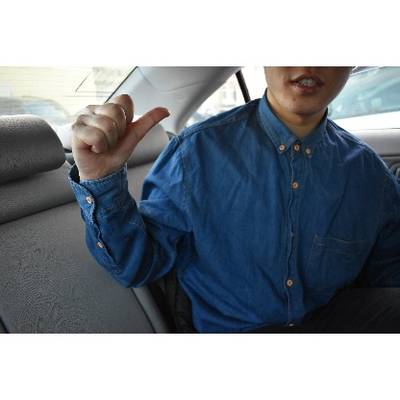



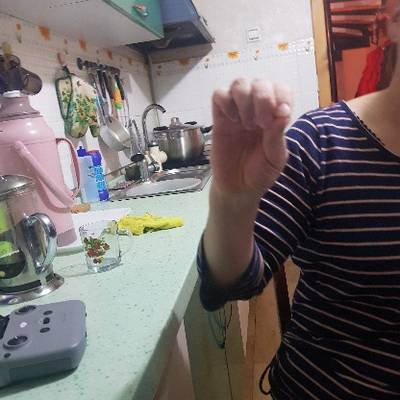

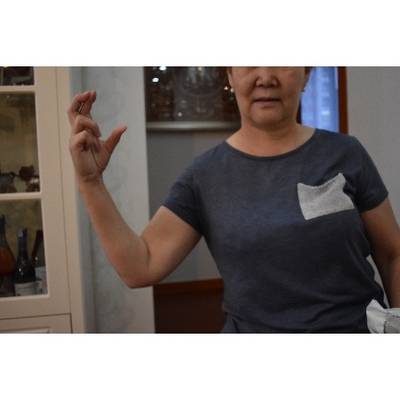


Class balance #
There are 32 annotation classes in the dataset. Find the general statistics and balances for every class in the table below. Click any row to preview images that have labels of the selected class. Sort by column to find the most rare or prevalent classes.
Class ㅤ | Images ㅤ | Objects ㅤ | Count on image average | Area on image average |
|---|---|---|---|---|
thaa➔ rectangle | 451 | 451 | 1 | 14.06% |
yaa➔ rectangle | 450 | 450 | 1 | 15.95% |
toot➔ rectangle | 450 | 450 | 1 | 13.18% |
thal➔ rectangle | 450 | 450 | 1 | 14.94% |
ta➔ rectangle | 450 | 450 | 1 | 14.16% |
sheen➔ rectangle | 450 | 450 | 1 | 19.35% |
seen➔ rectangle | 450 | 450 | 1 | 15.56% |
saad➔ rectangle | 450 | 450 | 1 | 11.47% |
meem➔ rectangle | 450 | 450 | 1 | 13.37% |
la➔ rectangle | 450 | 450 | 1 | 15.07% |
Images #
Explore every single image in the dataset with respect to the number of annotations of each class it has. Click a row to preview selected image. Sort by any column to find anomalies and edge cases. Use horizontal scroll if the table has many columns for a large number of classes in the dataset.
Object distribution #
Interactive heatmap chart for every class with object distribution shows how many images are in the dataset with a certain number of objects of a specific class. Users can click cell and see the list of all corresponding images.
Class sizes #
The table below gives various size properties of objects for every class. Click a row to see the image with annotations of the selected class. Sort columns to find classes with the smallest or largest objects or understand the size differences between classes.
Class | Object count | Avg area | Max area | Min area | Min height | Min height | Max height | Max height | Avg height | Avg height | Min width | Min width | Max width | Max width |
|---|---|---|---|---|---|---|---|---|---|---|---|---|---|---|
thaa rectangle | 451 | 14.06% | 67.96% | 1.75% | 69px | 16.59% | 398px | 95.67% | 187px | 44.96% | 37px | 8.89% | 304px | 73.08% |
al rectangle | 451 | 21.03% | 82.78% | 1.85% | 68px | 16.35% | 402px | 96.63% | 192px | 46.24% | 47px | 11.3% | 380px | 91.35% |
yaa rectangle | 450 | 15.95% | 76.37% | 1.83% | 61px | 14.66% | 391px | 93.99% | 153px | 36.72% | 48px | 11.54% | 370px | 88.94% |
toot rectangle | 450 | 13.18% | 81.23% | 1.62% | 66px | 15.87% | 398px | 95.67% | 163px | 39.16% | 37px | 8.89% | 358px | 86.06% |
thal rectangle | 450 | 14.94% | 71.64% | 2.36% | 54px | 12.98% | 388px | 93.27% | 158px | 37.96% | 57px | 13.7% | 415px | 99.76% |
ta rectangle | 450 | 14.16% | 61.43% | 1.37% | 64px | 15.38% | 406px | 97.6% | 187px | 45.05% | 33px | 7.93% | 289px | 69.47% |
sheen rectangle | 450 | 19.35% | 83.37% | 1.9% | 70px | 16.83% | 408px | 98.08% | 191px | 45.89% | 47px | 11.3% | 376px | 90.38% |
seen rectangle | 450 | 15.56% | 72.41% | 1.78% | 73px | 17.55% | 414px | 99.52% | 187px | 44.89% | 40px | 9.62% | 351px | 84.38% |
saad rectangle | 450 | 11.47% | 71.99% | 1.02% | 45px | 10.82% | 358px | 86.06% | 128px | 30.75% | 36px | 8.65% | 369px | 88.7% |
meem rectangle | 450 | 13.36% | 75.83% | 1.5% | 59px | 14.18% | 391px | 93.99% | 161px | 38.7% | 37px | 8.89% | 391px | 93.99% |
Spatial Heatmap #
The heatmaps below give the spatial distributions of all objects for every class. These visualizations provide insights into the most probable and rare object locations on the image. It helps analyze objects' placements in a dataset.

Objects #
Table contains all 14208 objects. Click a row to preview an image with annotations, and use search or pagination to navigate. Sort columns to find outliers in the dataset.
Object ID ㅤ | Class ㅤ | Image name click row to open | Image size height x width | Height ㅤ | Height ㅤ | Width ㅤ | Width ㅤ | Area ㅤ |
|---|---|---|---|---|---|---|---|---|
1➔ | nun rectangle | 1201_23_M_nun_5.jpg | 416 x 416 | 163px | 39.18% | 128px | 30.77% | 12.06% |
2➔ | seen rectangle | 1020_22_M_seen_4.jpg | 416 x 416 | 240px | 57.69% | 175px | 42.07% | 24.27% |
3➔ | ghain rectangle | 1201_23_M_ghain_2.jpg | 416 x 416 | 248px | 59.62% | 276px | 66.35% | 39.55% |
4➔ | yaa rectangle | 202_18_M_yaa_0.jpg | 416 x 416 | 269px | 64.66% | 339px | 81.49% | 52.69% |
5➔ | jeem rectangle | 1056_19_F_jeem_1.jpg | 416 x 416 | 212px | 50.96% | 174px | 41.83% | 21.32% |
6➔ | seen rectangle | 1007_29_M_seen_7.jpg | 416 x 416 | 104px | 25% | 65px | 15.62% | 3.91% |
7➔ | dal rectangle | 229_20_M_dal_7.jpg | 416 x 416 | 171px | 41.11% | 164px | 39.42% | 16.21% |
8➔ | thal rectangle | 202_18_M_thal_0.jpg | 416 x 416 | 298px | 71.63% | 249px | 59.86% | 42.88% |
9➔ | sheen rectangle | 202_18_M_sheen_0.jpg | 416 x 416 | 353px | 84.86% | 250px | 60.1% | 51% |
10➔ | toot rectangle | 1020_22_M_toot_5.jpg | 416 x 416 | 239px | 57.45% | 197px | 47.36% | 27.21% |
License #
Citation #
If you make use of the ArSL21L data, please cite the following reference:
@dataset{ArSL21L,
author={Ganzorig Batnasan and Munkhjargal Gochoo and Munkh Erdene Otgonbold and Fady Alnajjar and Timothy Shih},
title={ArSL21L: Arabic Sign Language Letter Dataset},
year={2022},
url={https://data.mendeley.com/datasets/f63xhm286w/1}
}
If you are happy with Dataset Ninja and use provided visualizations and tools in your work, please cite us:
@misc{ visualization-tools-for-arsl21l-dataset,
title = { Visualization Tools for ArSL21L Dataset },
type = { Computer Vision Tools },
author = { Dataset Ninja },
howpublished = { \url{ https://datasetninja.com/arsl21l } },
url = { https://datasetninja.com/arsl21l },
journal = { Dataset Ninja },
publisher = { Dataset Ninja },
year = { 2025 },
month = { dec },
note = { visited on 2025-12-30 },
}Download #
Dataset ArSL21L can be downloaded in Supervisely format:
As an alternative, it can be downloaded with dataset-tools package:
pip install --upgrade dataset-tools
… using following python code:
import dataset_tools as dtools
dtools.download(dataset='ArSL21L', dst_dir='~/dataset-ninja/')
Make sure not to overlook the python code example available on the Supervisely Developer Portal. It will give you a clear idea of how to effortlessly work with the downloaded dataset.
The data in original format can be downloaded here.
Disclaimer #
Our gal from the legal dep told us we need to post this:
Dataset Ninja provides visualizations and statistics for some datasets that can be found online and can be downloaded by general audience. Dataset Ninja is not a dataset hosting platform and can only be used for informational purposes. The platform does not claim any rights for the original content, including images, videos, annotations and descriptions. Joint publishing is prohibited.
You take full responsibility when you use datasets presented at Dataset Ninja, as well as other information, including visualizations and statistics we provide. You are in charge of compliance with any dataset license and all other permissions. You are required to navigate datasets homepage and make sure that you can use it. In case of any questions, get in touch with us at hello@datasetninja.com.


